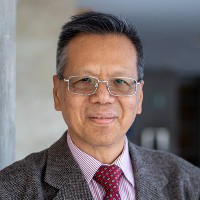Richard Cheung

Professor
Faculty of Engineering and Architectural Science
Department of Electrical, Computer, and Biomedical Engineering
Toronto, Ontario
cheung@torontomu.ca
Office:
(416) 979-5000 ext. 6112
Expert In
Bio/Research
Richard Cheung’s love for mathematics led him to power engineering, a subfield of electrical engineering that involves nuclear electricity design and power system protection and stability. Power engineering in particular, Cheung explains, heavily relies on mathematical analysis and modelling. “In...
Click to Expand >>
Click to Expand >>
Bio/Research
Richard Cheung’s love for mathematics led him to power engineering, a subfield of electrical engineering that involves nuclear electricity design and power system protection and stability. Power engineering in particular, Cheung explains, heavily relies on mathematical analysis and modelling. “In power engineering, you can’t play around. The revenue a generator produces in one day is over one million dollars, so any delay involves a huge financial loss,” says Cheung. “We cannot afford to implement any model with uncertainty or errors. That’s why we need mathematics to help us get it right.”
Over his 35 year career in power engineering, Cheung has completed over 20 major industrial projects, built four special-purpose power converters for Ontario utilities and mining companies, and manufactured a solar energy converter. In addition to teaching, Cheung also works as a consultant for the power industry, including the Bruce Power, Pickering and Darlington Nuclear Generating Stations. And although he’s been teaching in the same area for over 30 years, Cheung says he’s continually finding new ways to improve his teaching methods and learning from his students. “I like when students ask me challenging questions,” says Cheung.
Click to Shrink <<
Over his 35 year career in power engineering, Cheung has completed over 20 major industrial projects, built four special-purpose power converters for Ontario utilities and mining companies, and manufactured a solar energy converter. In addition to teaching, Cheung also works as a consultant for the power industry, including the Bruce Power, Pickering and Darlington Nuclear Generating Stations. And although he’s been teaching in the same area for over 30 years, Cheung says he’s continually finding new ways to improve his teaching methods and learning from his students. “I like when students ask me challenging questions,” says Cheung.
Click to Shrink <<